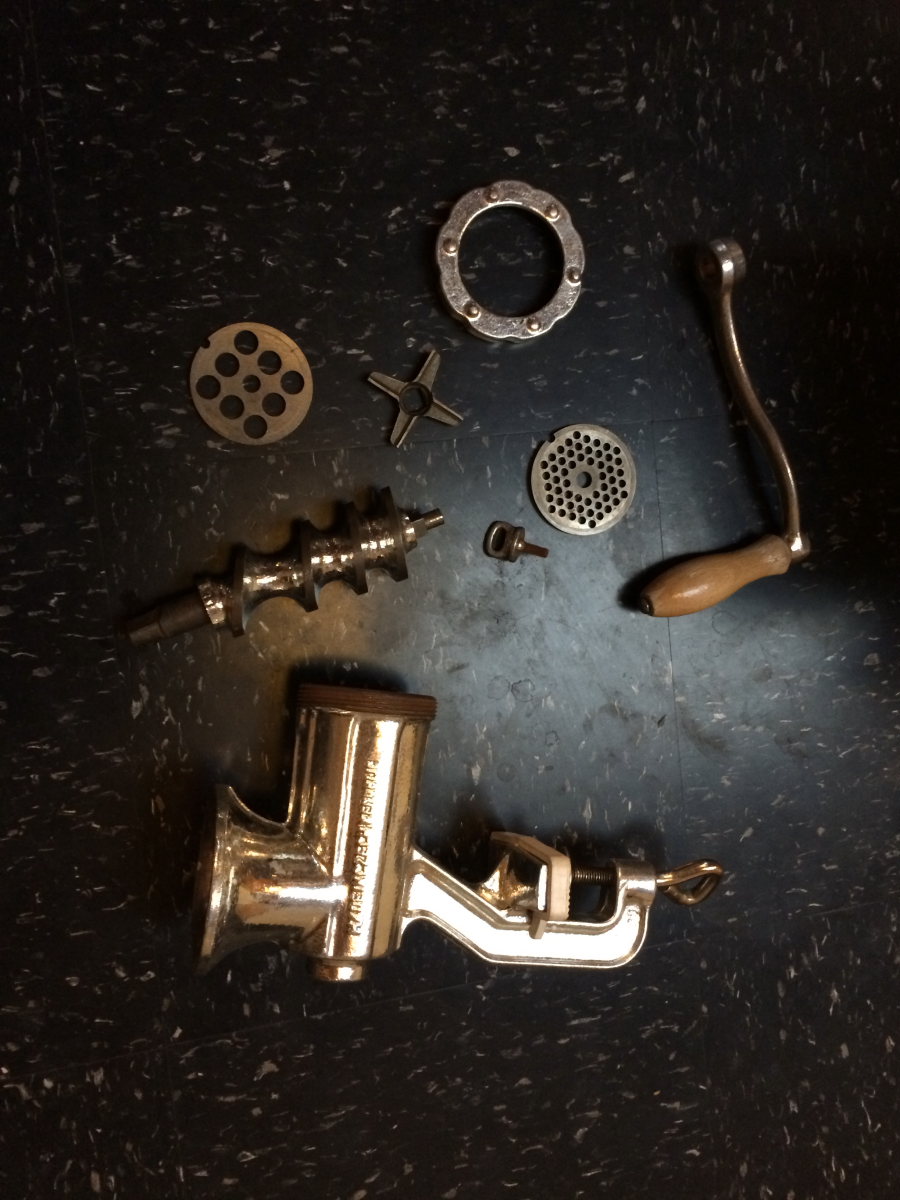I have been making many batches of sausages now. I make a lot of andouille and also want to make Spanish chorizo. Both types are traditionally made with big chunks of meat.
While my meat grinder attachment for my beloved Kenwood Chef mixer is very well design and made, the most coarse die does not give me the chunky grind that I want. I did some research online and concluded that the chance of finding a coarser die plate would be very unlike due to the unusual 2 1/4" diameter. There are other potential brand-specific dimensional incompatibilities like the center hole and key notch.
Also the screw impeller is made of molded plastic and I don't trust it by feeding big chunks of meat for the fear the excessive pressure will break the plastic especially it is over 20 years old. I have been considering a dedicated meat grinder. I have seen the rise of many affordable electric meat grinder on the market in recent years. It would seems the obvious choice.
my Kenwood Chef mixer and grinding attachment pieces
However as I read more of discussions by hunters and serious home sausage makers I found out a lot of them are buying the old manual grinders made of cast iron. Many of the vintage brands has been driven out of business by the cheap knockoffs from China. Recently I found out Francois over at FX Cuisine have been using a vintage Porkert he snapped up in Paris. BTW, Francois also has a Kenwood mixer and many other equipment I have. I thought if it is good enough for the Swiss banker it is good enough for me.
francois' ultimate foodie blogger kitchen
I started to research on the Porkert manual meat grinders as well as the few standing American manufacturers of good grinders. Porkert is a Czech Republic company but has closed many years ago.
By now I know to stick with either one still made in the USA, or to find a used Porkert on feeBay. I chose the latter hoping to find a Porkert in good condition. It is important to find one with the zine plating on the cast iron parts and body in good condition. I hope for a larger one but it is like everything in life, there are tradeoffs. A large one are typically screwed down to a surface. Smaller ones are clamped to a table edge.
On feeBay, most of the Porkerts for sale are #8 or smaller. #8 is the largest that is clamped down. With 2 1/2" diameter die plate it is not bad for home use. I bid on this one and won. It has a 15/16" die plate as well as a medium plate. It arrived a few days later and everything checked out. There is only superficial rust on the exposed cast iron and the zine plating is in excellent shape.
made in Czech Republic - what can be wrong from a country that do whole hog?
all the piece parts
it clamps securely on a table edge
here are the plastic impeller of my grinder attachment for my Kenwood mixer in the foreground
Kenwood coarse die plate compared to the Porkert coarse die plate
One thing that I do notice is that compared to the Kenwood grinder the Porkert has larger gaps between the screw impeller and the extrusion cylinder. The Kenwood has next to no gap. I love the Kenwood attachment has it not because of the plastic impeller, and my inability to find a coarse die (there is not a lot of room in the 2 1/4" diameter plate for larger holes).
Hand grinding a big bunch of meat is not as hard as it seems, especially for coarse grind. I will take a well built manual grinder than a poorly made electric one any day.
my new-to-me Porkert #8 in action making boudin








